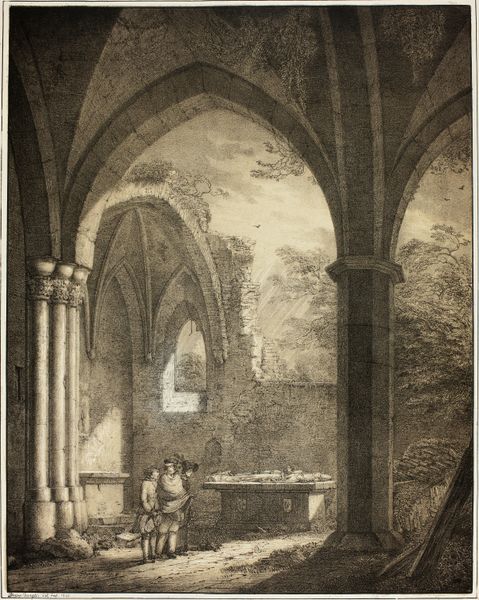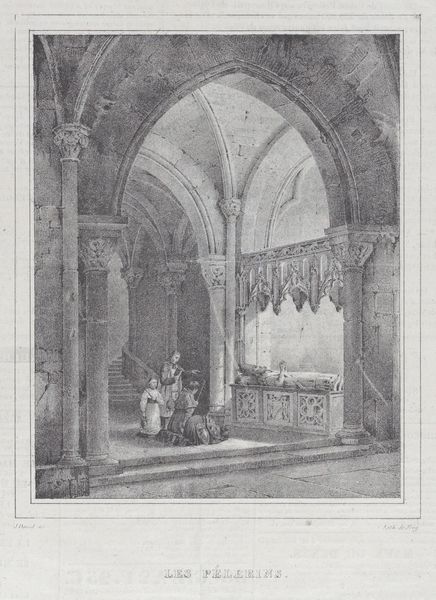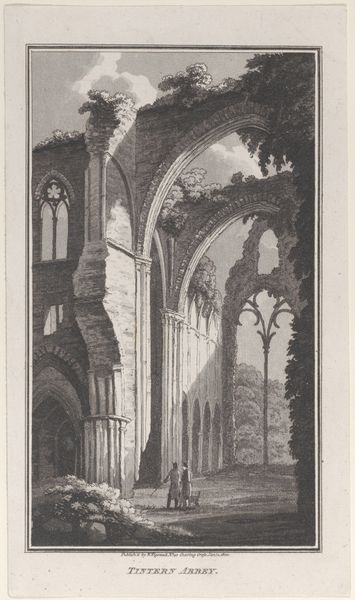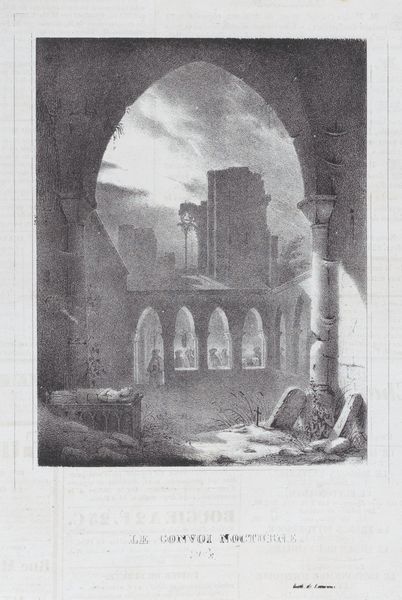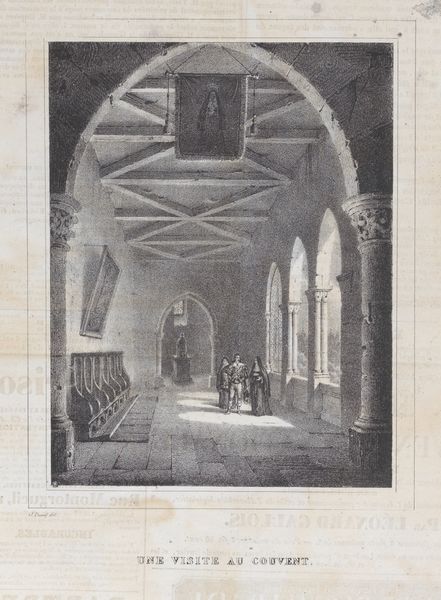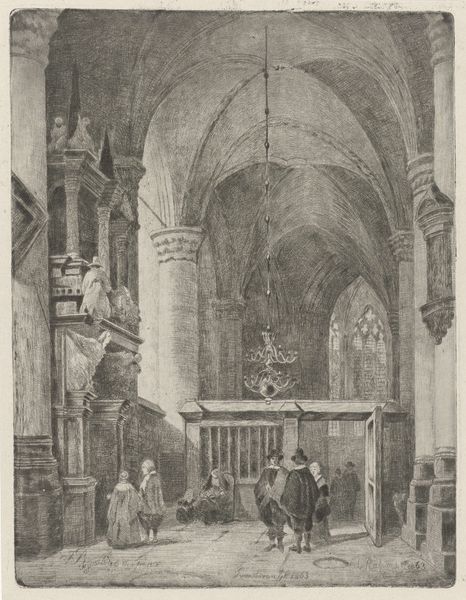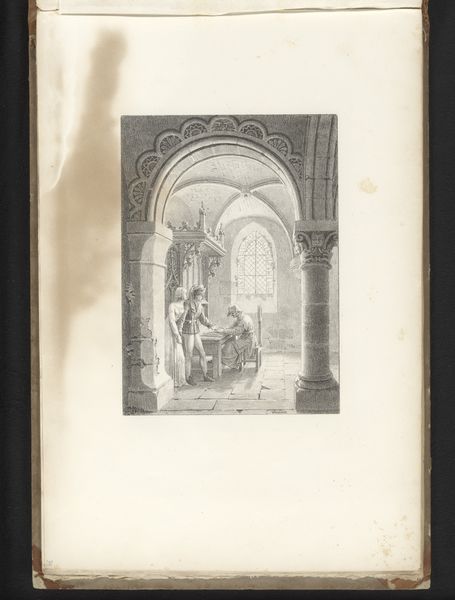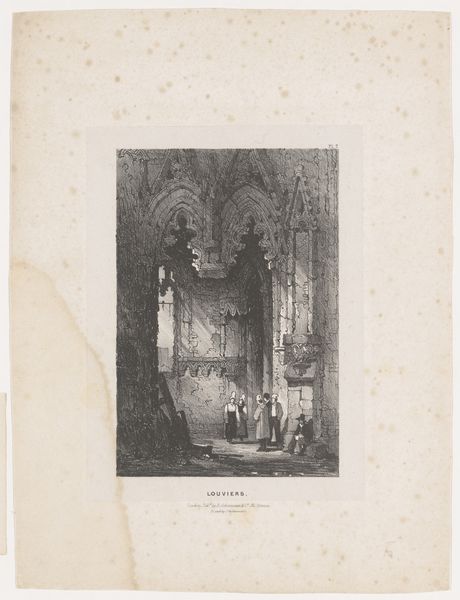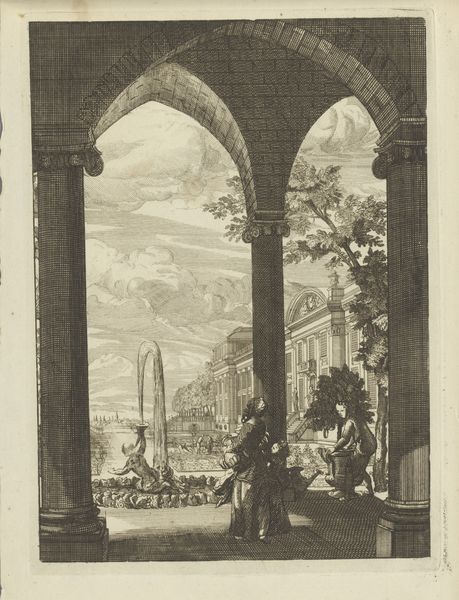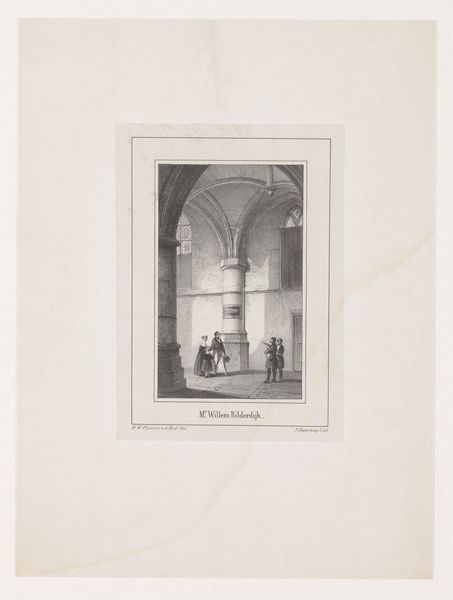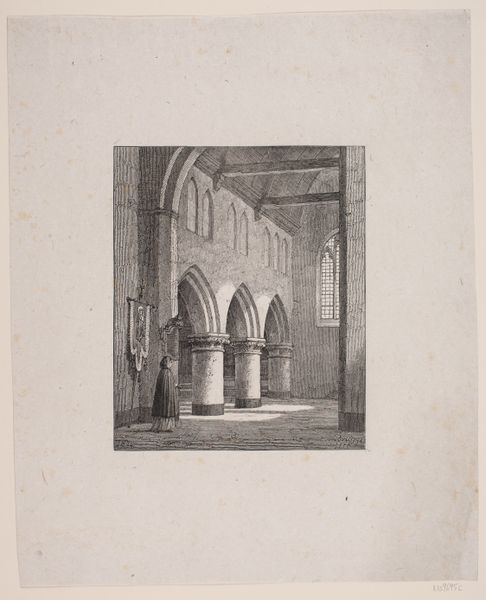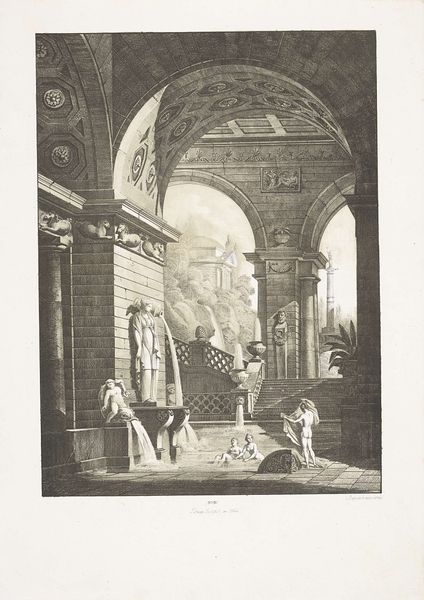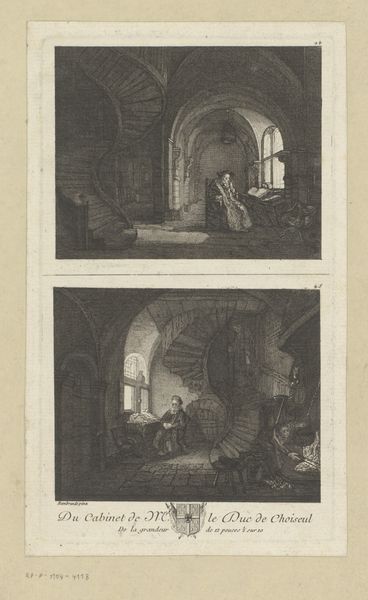
drawing, print, engraving
#
drawing
#
negative space
# print
#
landscape
#
romanticism
#
history-painting
#
engraving
Dimensions: Image: 6 1/4 × 4 13/16 in. (15.8 × 12.2 cm) Sheet: 11 7/16 × 7 13/16 in. (29 × 19.9 cm)
Copyright: Public Domain
Editor: Standing here in front of “L'Eglise en Ruines,” an engraving from sometime between 1829 and 1839, I’m struck by how the artist, J. Jacott, used line to create such a detailed architectural space, even in its ruined state. What elements of its visual composition stand out to you? Curator: I am immediately drawn to the interplay of light and shadow within the engraving. Jacott masterfully utilizes the contrast between the dark, decaying architecture and the bright, open sky visible through the ruined window. Consider how this deliberate manipulation of tonal values structures our reading of depth. The varying density and direction of the engraving's lines serve not merely to depict decay but also to evoke an emotional resonance, wouldn't you agree? Editor: Definitely, I noticed that contrast right away! How does the human presence, the figures near the center, alter how you view the piece? Curator: The figures serve primarily as formal elements, anchoring the composition and emphasizing the architectural scale. Their relatively diminutive size juxtaposed against the immensity of the ruins underscores the theme of human insignificance within the face of historical change and natural processes. But consider what their purpose may be through posing. What does it say that the light from the opening creates contrast of form around the figures? Editor: That's an interesting perspective. I hadn't thought about them merely as a compositional element but their posing does contribute a lot. Curator: It also causes one to consider, if those figures weren’t present, would the same dramatic tension hold? Visual structures create expectations to fill compositional gaps; absence itself contributes meaning. Editor: This formal approach has really illuminated a different way to understand art! I’m left appreciating Jacott's intentional construction of space and meaning through these simple elements.
Comments
No comments
Be the first to comment and join the conversation on the ultimate creative platform.
